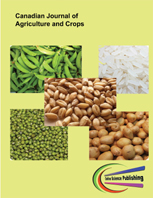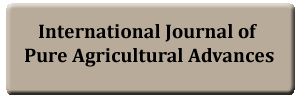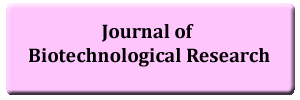Gangia Index (Ϫ) of Beta Diversity and Biomathematical Equations Applied to Quantify the Agroecological Multifunctional Entropy: Macrofauna Observed in Agroecosystems of Nicaragua
DOI:
https://doi.org/10.55284/cjac.v7i2.684Keywords:
Agroecology, Macroinvertebrates, Functional biota, Agrobiodiversity, Interactions, Detrimental biota, Bioindicator, Diversified systems.Abstract
The multifunctional diversity in agroecosystems must be studied from systemic and comprehensive approaches of non-parametric analysis. This article provides a new beta diversity index and biomathematical equations that quantify the agroecological multifunctional entropy of biodiversity. Ten agroecosystems were studied in: Boaco, Carazo, Chinandega, Estelí and Matagalpa. Agroecosystem approaches were conventional versus agroecological. The organisms captured were at 25 points per agroecosystem, for a total of 225 points. The macrofauna surface was identified over 3.1416 m2, in the center a soil monolith of 0.01875 m3 was explored. The data of the analysis required three visions: the first vision is abundance and functional richness forming the Gangia index by inductive method. The second vision is applying antiderivatives together with the Cartesian plane. The third vision is obtaining a global score. In the agroecosystems, 44 families of macrofauna were observed, 32 of them exerted negative functionality: Scarabaeidae, Chrysomelidae, Elateridae, Formicidae and Gryllidae. The families with positive functionality were 12: Lumbricidae, Sthaphylinidae, Rhynotermitidae and Theridiidae. The most important negative function was phytophagous. The positive functions in order of taxonomic richness were: detritivores, predators, omnivores and soil engineers. With the antiderivatives by taxonomic family, polygonal areas were created. The Boaco´s agroecosystems obtained the largest polygonal area with 735 384.5027 u2. The Gangia index of beta diversity was always higher where a greatest number of taxonomic families prevailed exerting positive functions. The Boaco´s agroecosystems obtained the highest value of the Gangia index of beta diversity with 13.72 points.


